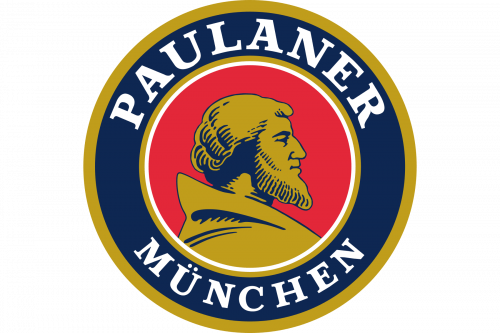Paulaner is the name of one of the oldest and most famous beer brands from Germany, which was established in 1634. Today the beer label is known and distributed all over the globe, being synonymous with a high-quality German beer.
Meaning and history
Paulaner is a legendary and iconic brand, with a very rich and impressive history. Being one of the world’s first beer labels ever created, Paulaner values traditions and roots, and this is why its logo, which is definitely one of the most recognizable in the industry, hasn’t been changed for decades. It is elegant, simple, yet confident and memorable. The truly German approach to visual identity design — quality and perfect execution.
The visual identity of the German beer manufacturer is composed of three elements — a circular emblem, an elegant datemark, set on its sides, and a bold massive logotype, which is usually placed under the graphical part of the logo.
Like most of the very first breweries in Europe, Paulaner has its history connected with monks. This is why the main element of the brand’s emblem is a portrait of a man, placed in profile, facing right, and wearing a monk’s hood. The image is drawn in gold, with blue accents and contours, and placed on a bright Ted background, which is framed into a thick blue circle with a double golden outline.
The Paulaner beer is named after the founder of the Order of Minims, Francis of Paola. Now the label is decorated with a portrait of the monk of the monastery “Neudeck ob der Au”.The image of Francis is enclosed into a frame with a white “Paulaner Munich” inscription in a solid and elegant serif font, written in all capitals.
As for the “Seit 1634” datemark, it is drawn in a fancy lightweight golden cursive with curved elongated lines. Which is balanced by a massive and confident uppercase logotype, set under it in square serif letters drawn in dark blue and outlined in gold.
Though the inscription is set in all capitals, the first, last, and the middle letter “A” are slightly enlarged, which makes the whole image more recognizable and unique.









